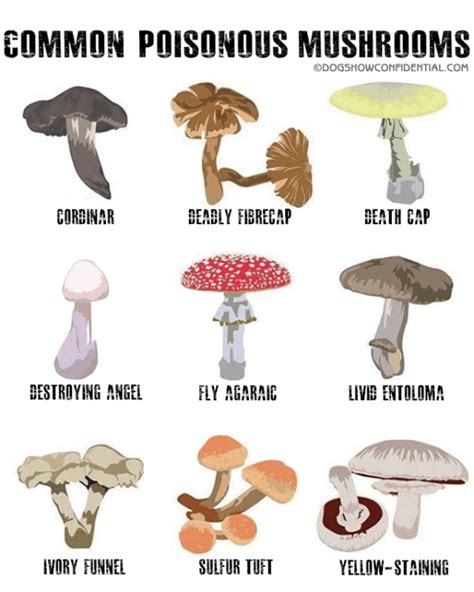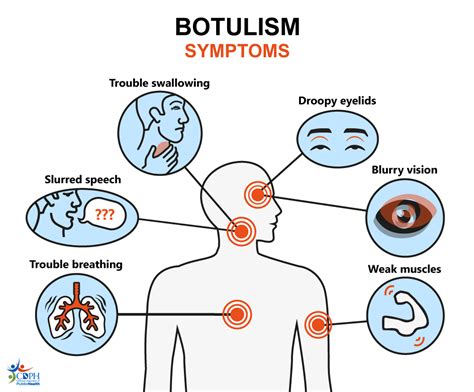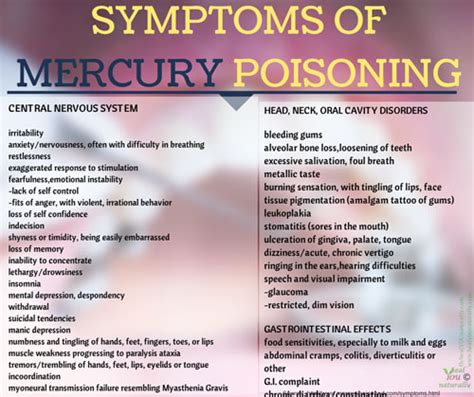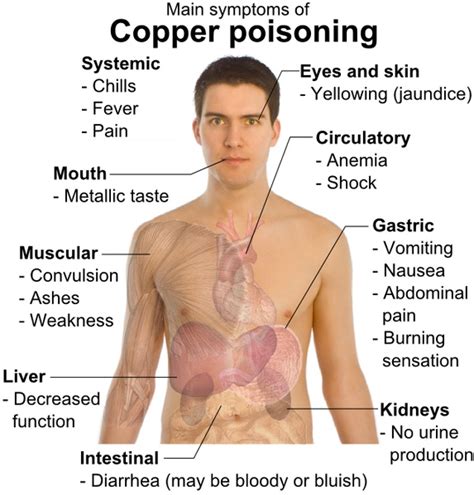
Mushroom Poisoning
Understanding Mushroom Poisoning
Mushroom poisoning is a serious medical condition that occurs when individuals consume toxic mushrooms. To understand mushroom poisoning, it is crucial to have knowledge about the different types of toxic mushrooms, their symptoms and signs, treatment options, and preventive measures. By understanding the various aspects of mushroom poisoning, individuals can better protect themselves and others from the harmful effects of toxic mushrooms.
Types of Toxic Mushrooms
There are numerous species of mushrooms that are poisonous and can cause severe health issues when ingested. Some of the most common toxic mushrooms include Amanita phalloides (Death Cap), Gyromitra esculenta (False Morel), and Cortinarius rubellus (Deadly Webcap). These mushrooms contain toxic compounds such as amatoxins, gyromitrin, and orellanine, which can lead to liver failure, kidney damage, and even death.
Symptoms and Signs of Mushroom Poisoning
Mushroom poisoning can manifest in various ways depending on the type of toxic mushroom and the individual’s sensitivity to the toxins. Common symptoms of mushroom poisoning include nausea, vomiting, abdominal pain, diarrhea, dizziness, sweating, and hallucinations. In severe cases, symptoms may progress to liver or kidney failure, seizures, and respiratory distress. Immediate medical attention is crucial if mushroom poisoning is suspected.
Treatment Options for Mushroom Poisoning
The treatment for mushroom poisoning depends on the specific toxins involved and the severity of the symptoms. In many cases, gastric decontamination techniques such as induced vomiting or administration of activated charcoal are used to remove the toxins from the body. Supportive care, such as intravenous fluids and medications to control symptoms, may also be provided. In severe cases, more aggressive interventions like liver transplantation may be necessary to save a patient’s life.
Preventing Mushroom Poisoning
Prevention is key when it comes to avoiding mushroom poisoning. It is essential to be knowledgeable about the different types of toxic mushrooms and their distinguishing features. One should never consume wild mushrooms unless they are identified with absolute certainty. Gathering mushrooms for consumption should only be done by those with extensive knowledge and experience in mycology. It is also advisable to buy mushrooms from reputable sources to ensure their safety. Educating oneself and others about the risks and dangers associated with toxic mushrooms can significantly reduce the incidence of mushroom poisoning.
Types of Toxic Mushrooms
When it comes to mushrooms, most people think of delicious and nutritious fungi that can be savored in a variety of culinary dishes. However, not all mushrooms are safe to consume. In fact, there are several types of toxic mushrooms that can cause serious harm if ingested. It’s important to be aware of these toxic varieties and understand their distinguishing features to avoid any potential health risks.
One type of toxic mushroom is the Amanita phalloides, commonly known as the Death Cap. This mushroom is responsible for the majority of mushroom poisonings worldwide. It has a greenish-white cap and white gills, and can be found in wooded areas. Another toxic mushroom is the Gyromitra esculenta, also known as the False Morel. This mushroom has a brain-like appearance with a reddish-brown cap and is often found in coniferous forests.
Another group of toxic mushrooms is the Cortinarius species. These mushrooms can be particularly dangerous as they contain a toxin called orellanine, which can cause kidney damage. Cortinarius species vary in appearance, but many have a rusty brown cap and a central stem. It’s important to note that not all mushrooms within this group are toxic, but it’s best to err on the side of caution and avoid consuming them.
There are also several other types of toxic mushrooms, such as the Inocybe species, which have a small and often fibrous cap, and the Lepiota species, which have a white cap with brown scales. These mushrooms contain toxins that can cause gastrointestinal symptoms and, in severe cases, liver damage.
It’s crucial to remember that identifying mushrooms can be challenging, especially for those who are not experienced mycologists. Therefore, it’s always recommended to consult with an expert or refer to a reliable field guide before consuming any wild mushrooms. Additionally, be cautious when purchasing mushrooms from markets or stores, as misidentification can still occur.
In conclusion, there are various types of toxic mushrooms that should be avoided to prevent mushroom poisoning. The Amanita phalloides, Gyromitra esculenta, Cortinarius species, Inocybe species, and Lepiota species are just a few examples of toxic mushrooms with distinct features. To ensure your safety, it’s essential to educate yourself about these toxic varieties and seek guidance from experts when foraging or consuming mushrooms. Remember, when it comes to wild mushrooms, it’s better to be safe than sorry.
Symptoms and Signs of Mushroom Poisoning
Mushrooms, with their wide variety of shapes, colors, and sizes, have always intrigued humans. While many mushrooms are safe to consume, there are some that can cause severe poisoning if ingested. It is crucial to be able to recognize the symptoms and signs of mushroom poisoning to seek prompt medical attention. This blog post aims to provide you with an understanding of the symptoms and signs associated with mushroom poisoning.
When it comes to mushroom poisoning, the symptoms can vary depending on the type of mushroom ingested and the amount consumed. However, there are some common signs that indicate mushroom poisoning. These symptoms usually appear within a few hours to several days after ingestion. Nausea and vomiting are often the initial signs, accompanied by diarrhea, abdominal pain, and cramping. Headaches, dizziness, and weakness may also be experienced.
In more severe cases of mushroom poisoning, individuals may experience hallucinations, confusion, and delirium. Visual disturbances, such as blurred vision or dilated pupils, can also occur. Some toxic mushrooms can affect the liver and lead to jaundice, which is characterized by yellowing of the skin and eyes. Additionally, individuals may experience kidney failure or other organ damage.
Treatment Options for Mushroom Poisoning
When it comes to mushroom poisoning, immediate medical attention is crucial. In severe cases, it can be a matter of life and death. The treatment options for mushroom poisoning depend on the type of mushroom ingested and the severity of the symptoms. Here, we will discuss three main treatment approaches used in cases of mushroom poisoning.
1. Supportive Care:
In mild cases of mushroom poisoning, where the symptoms are not life-threatening, supportive care is usually sufficient. This involves providing comfort and relief for the patient while their body naturally eliminates the toxins. Supportive care may include:
- Fluid replacement therapy to prevent dehydration and promote kidney function.
- Administration of antiemetic medications to control nausea and vomiting.
- Supplemental oxygen therapy, if needed, to maintain adequate oxygen saturation levels.
2. Gastric Decontamination:
In cases where the ingestion of toxic mushrooms has occurred recently, gastric decontamination may be attempted. This method aims to remove any remaining toxins from the stomach and prevent further absorption into the bloodstream. Gastric decontamination methods include:
- Inducing vomiting under medical supervision.
- Administering activated charcoal to absorb toxins in the stomach.
- Performing gastric lavage, a procedure where the stomach is flushed with a saline solution.
3. Antidotes and Specific Treatments:
In certain cases of mushroom poisoning, specific antidotes or treatments may be available to counteract the toxic effects. These treatments are usually reserved for severe cases and are administered in a hospital setting by trained medical professionals. Some examples include:
| Mushroom Type | Antidote/Treatment |
|---|---|
| Amanita phalloides (Death Cap) | Administration of silibinin or milk thistle extract to inhibit liver damage. |
| Psilocybin Mushrooms | Supportive care and reassurance during the psychedelic experience. |
| Gyromitra Mushrooms | Administration of pyridoxine (vitamin B6) to counteract the toxin. |
It is important to note that self-medication or home remedies should never be attempted in cases of mushroom poisoning. Only trained medical professionals can assess the severity of the poisoning, identify the specific mushroom involved, and provide appropriate treatment.
In conclusion, prompt medical intervention is crucial when dealing with mushroom poisoning. Supportive care, gastric decontamination, and specific antidotes/treatments are the primary treatment options available. Remember, prevention is always better than treatment, so it is essential to educate yourself about the types of toxic mushrooms and take preventive measures to avoid mushroom poisoning.
Preventing Mushroom Poisoning
Mushrooms are a popular choice in many culinary dishes due to their unique flavors and textures. However, it is important to note that not all mushrooms are safe to consume. In fact, there are numerous toxic mushrooms that can cause severe illness and even death if ingested. To ensure the safety of yourself and your loved ones, it is crucial to be aware of the necessary precautions and strategies for preventing mushroom poisoning.
1. Educate Yourself:
The first step in preventing mushroom poisoning is to educate yourself about the different types of mushrooms and their potential toxicity. Familiarize yourself with the varieties of mushrooms that grow in your area and learn to distinguish between edible and toxic species. Consider attending a mushroom identification workshop or consulting with a mycologist to enhance your knowledge in this area.
2. Purchase Mushrooms from Reliable Sources:
When it comes to purchasing mushrooms, always opt for trusted and reputable sources. Avoid the temptation of foraging for wild mushrooms unless you have extensive knowledge and experience in mushroom identification. Buying mushrooms from trusted farmers’ markets, grocery stores, or certified suppliers significantly reduces the risk of consuming toxic mushrooms.
3. Cook Mushrooms Thoroughly:
Cooking mushrooms thoroughly can help to eliminate any potential toxins present in the fungi. Heat breaks down certain harmful compounds found in mushrooms, rendering them harmless. It is important to note that simply cooking toxic mushrooms without proper identification is not a foolproof method, as some toxins can be heat-resistant. Therefore, proper identification remains crucial.
| Types of Mushrooms | Edible/Toxic |
|---|---|
| Morel | Edible |
| Chanterelle | Edible |
| Amanita phalloides (Death Cap) | Toxic |
| Galerina marginata | Toxic |
4. Store Mushrooms Properly:
Proper storage of mushrooms is essential in preventing mushroom poisoning. Store mushrooms in a cool and dry place, preferably in a paper bag or a breathable container. Avoid using plastic bags, as they can trap moisture and hasten the spoiling process. Check mushrooms before consumption for any signs of decay or mold, and discard any questionable specimens.
5. Teach Children about Mushroom Safety:
Children are naturally curious, and mushrooms can be particularly intriguing to them. However, it is crucial to educate children about the potential dangers of consuming wild mushrooms. Teach them never to eat any mushrooms without adult approval and supervision. Encourage them to inform an adult if they come across any mushrooms while playing outdoors.
By following these preventive measures, you can significantly reduce the risk of mushroom poisoning. Remember, when it comes to mushrooms, it is always better to be safe than sorry. Stay informed, purchase from reliable sources, cook mushrooms thoroughly, store them properly, and educate those around you about mushroom safety. These simple steps can help ensure that your culinary adventures with mushrooms remain a delightful and safe experience!
Frequently Asked Questions
Q1: What are the different types of toxic mushrooms?
A1: There are various types of toxic mushrooms, including Amanita phalloides (Death Cap), Gyromitra esculenta (False Morel), and Galerina marginata (Deadly Galerina).
Q2: What are the symptoms and signs of mushroom poisoning?
A2: The symptoms and signs of mushroom poisoning can vary depending on the type of mushroom ingested. Common symptoms include nausea, vomiting, abdominal pain, diarrhea, dizziness, sweating, and in severe cases, liver or kidney failure.
Q3: How is mushroom poisoning treated?
A3: The treatment for mushroom poisoning depends on the specific toxin and severity of symptoms. It may involve inducing vomiting, administering activated charcoal, providing supportive care, or in extreme cases, liver transplant or dialysis.
Q4: How can I prevent mushroom poisoning?
A4: To prevent mushroom poisoning, it is crucial to avoid picking and consuming wild mushrooms unless you are an expert. Educate yourself about poisonous mushrooms, always purchase mushrooms from reliable sources, and properly cook them to eliminate toxins.
Q5: Is it safe to eat any wild mushrooms?
A5: No, it is not safe to eat any wild mushrooms unless you are certain about their identification and edibility. Even a small mistake can lead to mushroom poisoning, which can be life-threatening.
Q6: Are there any antidotes for mushroom poisoning?
A6: Some specific cases of mushroom poisoning may have antidotes available, such as silibinin for Amanita phalloides poisoning. However, these antidotes should only be administered under medical supervision.
Q7: What should I do if someone ingests a toxic mushroom?
A7: If someone ingests a toxic mushroom, it is essential to seek immediate medical help. Take a sample of the mushroom (if safely possible) for identification purposes, and inform the healthcare professionals about the symptoms and time of ingestion.


